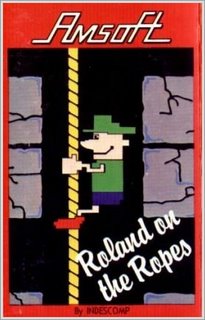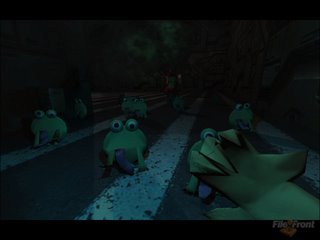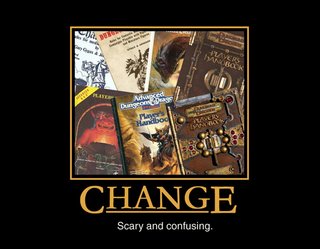
Alan Michael Sugar wasn't quite the genius when it came down to naming companies. He was (
and might just as well still be) quite enamored with his admittedly quirky family name too. Thus,
AMSTRAD -
Alan Michael Sugar Trading- was the name he picked for his first company. Or to use my sharp like the sharp thing precision, the name he picked for his legendary high-tech company.
AMSTRAD was born many-many years ago, back in faerie-tale 1968. At a time when the world was aflame and Paris was trying to show humanity the way, dear Mr. Sugar was entering the Hi-Fi corporate arena. To each his own I guess, but that's quite irrelevant.
Apparently, Mr. Sugar's Hi-Fi business wasn't enough for him. The not-just-yet (co)owner of
Tottenham Hotspur, a man of apparently astonishing insight, decided during the early '80s to enter the rather lucrative home computer market, by launching nothing less than my beloved
CPC series. The same series that eventually led to Mr. Sugar being awarded
Sir status; quite appropriate for someone, who as a 21 year old during 1968 tried to become a major capitalist.
 Paris '68: the art of the era.
Paris '68: the art of the era.Anyway, politics aside, in The Year Of Our Lord 1984, Sir Alan the Shrewd, even though sorely lacking help from either Sir Galahad the Chaste or Sir Robin The Not-So Brave, decided to follow Sir Clive's example, and unleash an 8bit Z80A based computer. It was the AMSTRAD CPC 464, an all-in-one concept, that crammed a tape drive in a sleek multi-colored keyboard, which in true '80s fashion also housed the 4MHz processor, 64kb of RAM, 48k of ROM, graphics and music chips, but not the power supply. This one was reserved for AMSTRAD's monitor (in colored and green flavor) and was another fine innovation, that actually forced you to buy one.
 The CPC 464
The CPC 464The 464 was promptly followed by the 664, that sported a nice 3-inch disk drive, which was swiftly surpassed from the brilliant CPC 6128. Surprisingly the 6128 featured 128k of RAM and a disk drive. Shortly before releasing the 8bit powerhouse that was the 6128 plus, complete with game-cartridge slot and an updated graphics chip (featuring a 4096 color palette) in 1990, AMSTRAD also bought the rights to produce Sinclair computers. It then went on to create such miracles as the Spectrum +2 and +3, that generally managed to fail spectacularly. Just like its 6128plus based console, the GX4000. This one was so appalling, it was actually being given by CVG as a gift to the "crap letter of the month", and sold so poorly, it's quite a collector's item today, in our era of collectible stuff.
 The AMSTRAD CPC 6128 plus
The AMSTRAD CPC 6128 plus
The
CPC featured an impressively powerful and user friendly BASIC. Aaah, yes, and quite an array of brilliant games, that as part of their loading procedure required you to type "cat" (
an equivalent of the old DOS "dir" command). Top games included
Head over Heels,
Prince of Persia,
Turrican,
Pirates!,
The Lurking Horror,
Barbarian,
B.A.T. and the early '90s and visually impressive
Zap't'Balls and
Xyphoes Fantasy. Run them all (and of course more) through the impressive
WinAPE emulator.
 Xyphoe's Fantasy
Xyphoe's FantasyOh, and can't quite understand how something as this came close to slipping my mind (
I guess I've been a bad naughty gnome...),
AMSTRAD also created a mascot.
Roland, the
AMSTRAD owned
Amsoft character, who went on to star in quite a few horrid games like
Roland Goes Square Bashing,
Roland on the Run and
Roland Ahoy, and in a couple of gems like
Sorcery+ or
Roland in Space. All in all more than 50
Roland games were released (complete list
here).
 Roland!
Roland!
Unfortunately, following a universal trend governing the fate of good things, the 8 bit era (a good thing) came to an end. Not unexpectedly mind you, but in a rather shocking way for quite a lot of 8bit computer manufacturers. Then the home computer market died altogether, managing to even eradicate giants like Commodore. AMSTRAD prevailed.
Despite its amazingly weird offerings, the company is still alive, still in the (almost) hi-tech business, and quite profitable too. But you care not dear reader, do you? Corporate matters are none of your enlightened interest. You simply want to find out about AMSTRAD's weirdest contraptions. The simple (XT) PCs it produced, namely PC1512, PC1640 or even PC2386, don't fascinate you either. The MegaPC though, will. It was, you see, a vastly overpriced (386SX) PC - SEGA MegaDrive hybrid. Obviously it sort of ... er ... flopped. Despite giving people the possibility of playing Sonic on a proper VGA monitor. And despite it's fine looks.
 Sonic and Spreadsheet fun!
Sonic and Spreadsheet fun!
The PCW series, on the other hand, did extremely well and only ended their production in the late '90s (the final offering being the PCW16 released in 1996). If you indeed have to know, the PCWs were dedicated word-processing PCs, nicely bundled with a cheap dot-matrix printer. Find out more here and get the emulator there. There were a few PCW games released too, mind you...The rest of AMSTRAD's unique, quite obscure and slightly paranoid products included the PenPad PDA, the portable PPCs and some satellite phones. Nowadays, they seem more interested in coming up with em@il-phones, a variety of sound-systems and decent digital satellite receivers. Not that exciting really...Well, that's all. The rest you've got to find out for yourselves, I'm afraid.
But... Oh no! Look! More web-resources!
Related at Gnome's Lair : OXO; the first video game ever, Mario's complete gameography, the USSR home computer, Buy a Dreamcast
Related Tags: AMSTRAD, Sugar, CPC, 6128, 464, GX4000, CPC 6128, 6128+, PCW, MegaPC, SEGA, retro, emulation, emulator, emulators, Vintage, Home computer, computers, Game, Games, Entertainment, Weblog, Blog, Feature
 I really have to thank my dear friend Brian (whom I met over at Mr. Forbeck's excellent blog) for introducing me to an excellent and most esteemed of publications: Games Quarterly. A brilliant gaming mag mostly featuring board, miniature, card, family and Role Playing games, which Brian sent me all the way from picturesque (and quite hot) Texas (!).
I really have to thank my dear friend Brian (whom I met over at Mr. Forbeck's excellent blog) for introducing me to an excellent and most esteemed of publications: Games Quarterly. A brilliant gaming mag mostly featuring board, miniature, card, family and Role Playing games, which Brian sent me all the way from picturesque (and quite hot) Texas (!).








































